Norovirus is a common and contagious illness that can affect people on cruise ships as well as on land.
It causes gastrointestinal symptoms such as nausea, vomiting and diarrhoea. Whilst symptoms can be extremely unpleasant, it is usually short-lived, lasting one or two days.
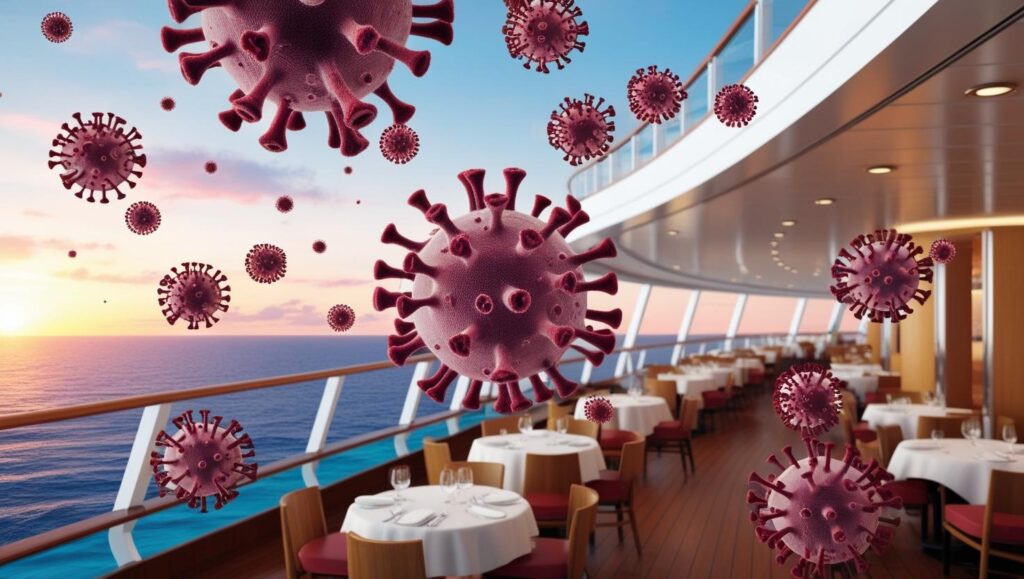
But a lot of people assume that it’s much worse on cruise ships than anywhere else, and it can even put them off cruising. Once you know the truth though, you’ll realise it’s nowhere near as bad as some would have you believe.
Norovirus On Cruise Ships
Norovirus is caught by having contact with an infected person, either directly, or by touching contaminated surfaces. Norovirus outbreaks can occur on cruise ships when people bring the virus onto the ship and pass it on to others.
Cases of norovirus on cruise ships are reported more commonly than on land because cruise ship passengers are required to report cases to the ship’s medical team. On land, most people recover at home without seeking medical help.
This has resulted in norovirus being incorrectly called ‘the cruise ship disease’ or the ‘cruise ship illness’.
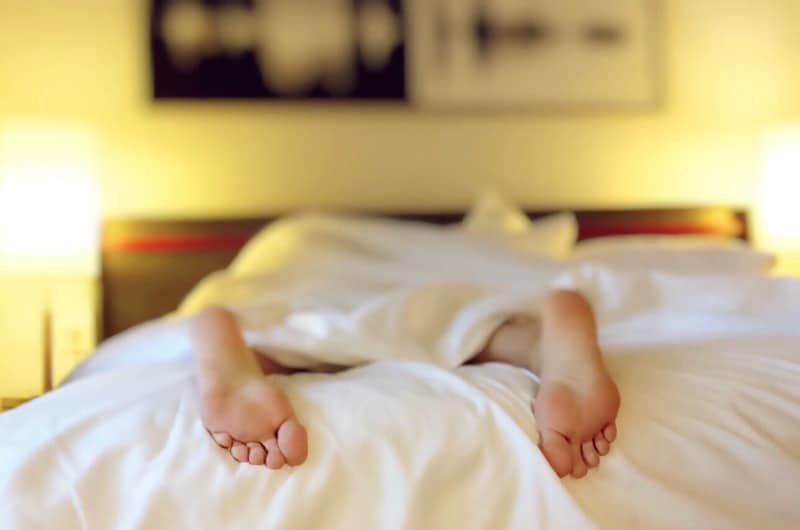
Norovirus Can Happen Anywhere
Whilst cruise ships have a bad reputation for norovirus contamination, norovirus is, in fact, common anywhere where people are contained – such as offices, schools, hospitals and hotels. It is not any more common on cruise ships than in any of these places.
Read on for all the latest statistics about cruise ship norovirus.
Cruise Ship Norovirus Statistics
The Likelihood Of Getting Norovirus On A Cruise
Between 2018 and 2014, 74 million cruise passengers sailed out of US ports. 12,968 of those passengers reported norovirus infections. According to these statistics, the chance of catching norovirus on a cruise is 0.018%. (Source)
The Worst Cruise Ships For Norovirus
The CDC’s Vessel Sanitation Program records outbreaks of gastrointestinal illness on cruise ships.
In 2024, the cruise line most affected by norovirus was Holland America Line, with four of the ships in it’s fleet suffering an outbreak (Koningsdam, Zuiderdam, Rotterdam and Eurodam).
Other norovirus outbreaks on cruise ships in 2024 include:
- Oceania Cruises – Oceania Nautica
- Cunard Line – Queen Victoria and Queen Mary 2 (twice)
- Princess Cruises – Ruby Princess, Coral Princess and Sapphire Princess
- P&O Cruises – Arcadia
- Celebrity Cruises – Celebrity Summit and Celebrity Constellation
- Royal Caribbean International – Radiance of the Seas
(Source)
The most severe of these outbreaks happened onboard Cunard Line’s Queen Mary 2 from 21st December 2024 to 3rd January 2025 where 346 of 2,565 passengers contracted norovirus (13.5%).
Of course, any cruise ship can have an outbreak of norovirus on board, just as any school, hospital or hotel can. These statistics don’t mean that these ships are any less hygienic than ships that have not reported an outbreak.
It’s also important to note that norovirus cruise ship statistics from the CDC only relate to cruises that call at US ports. So cruises to Europe and elsewhere in the world won’t be included in these reports.
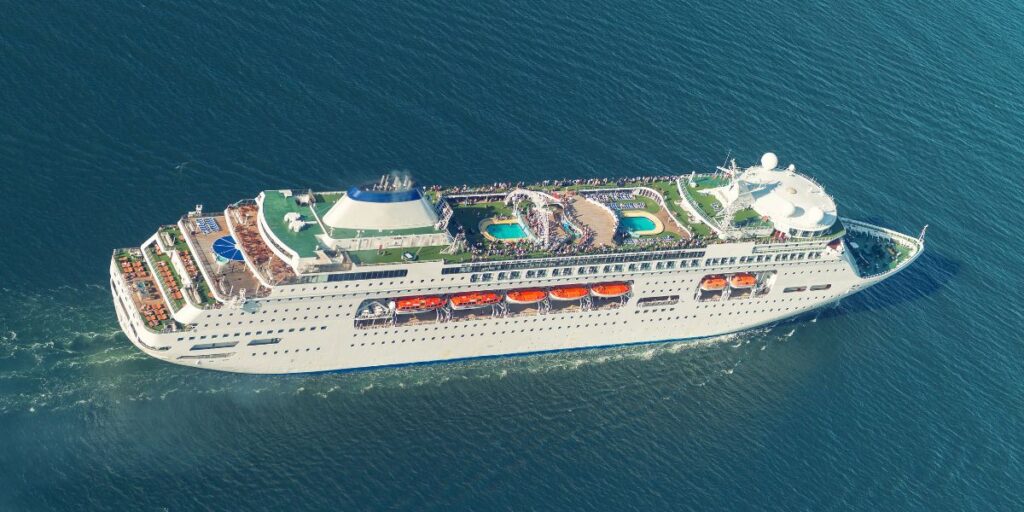
The Worst Norovirus Outbreak On A Cruise Ship
The worst outbreak of norovirus on a cruise ship occurred onboard Royal Caribbean’s Explorer of the Seas in January 2014. On this 10-night cruise, 534 out of 3071 (20.6%) passengers or crew reported being ill.
How To Avoid Norovirus On Cruise Ships
Here are four tips for avoiding norovirus on cruise ships.
1. Wash Your Hands
The most effective way to prevent norovirus on a cruise is with regular and thorough handwashing. It is particularly important that you do this after using the bathroom and before and after eating, drinking or smoking.
The most effective way to clean your hands is to wet them with water, apply liquid soap, lather, rinse and dry.
When I was on board a cruise ship during a norovirus outbreak, this flyer about the correct handwashing procedure was distributed to all passengers on their cabins.
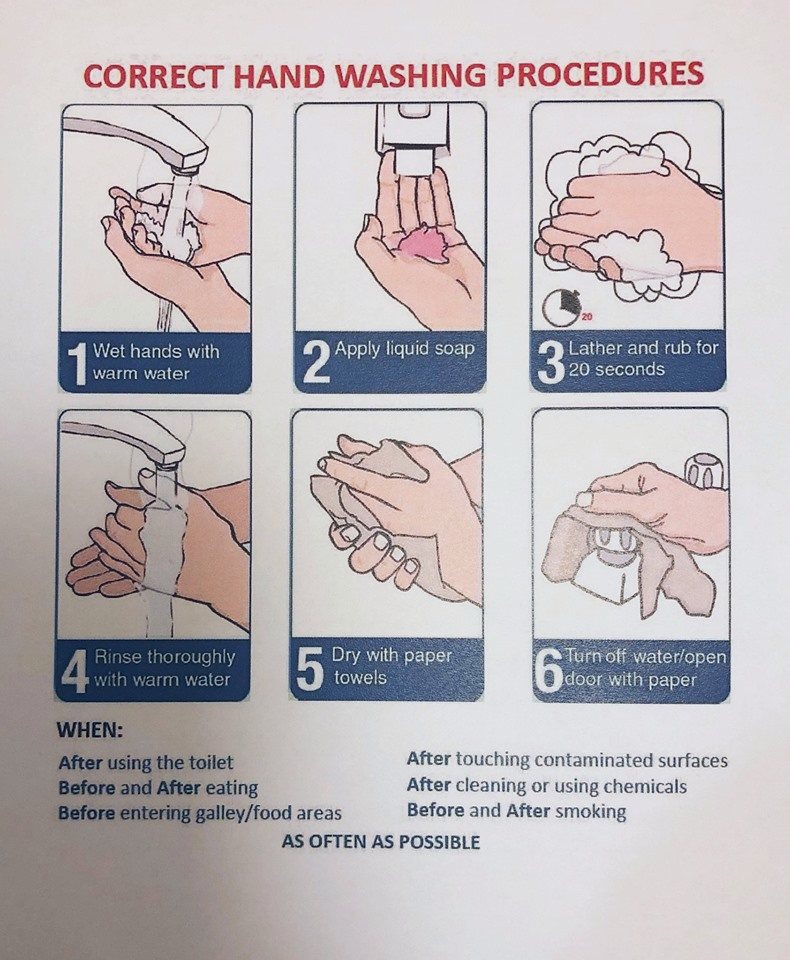
2. Use Hand Sanitiser
Alcohol hand gels are not as effective as soap and water, but they are useful at times when soap and water isn’t available.
There will be hand sanitiser available at stations all over the ship, but it’s also a good idea to carry your own. To avoid having to rummage in your bag, hand sanitiser bracelets are an excellent option.

See hand sanitiser bracelets on Amazon.com (if you’re in the US)
See hand sanitiser bracelets on Amazon.co.uk (if you’re in the UK)
3. Avoid Touching Surfaces
Your freshly-washed hands are only clean until you touch something, so you should avoid touching surfaces that are regularly touched by other people.
It’s important that you turn off taps and open bathroom doors using a paper towel to keep your freshly-washed hands clean.
You should also avoid touching elevator buttons with your fingers, and instead use a knuckle or elbow.
Only touch staircase railings if you need to do so for stability. If you’re unsure, you can hover your hand above the railing, so that it’s there if you need to grab it.
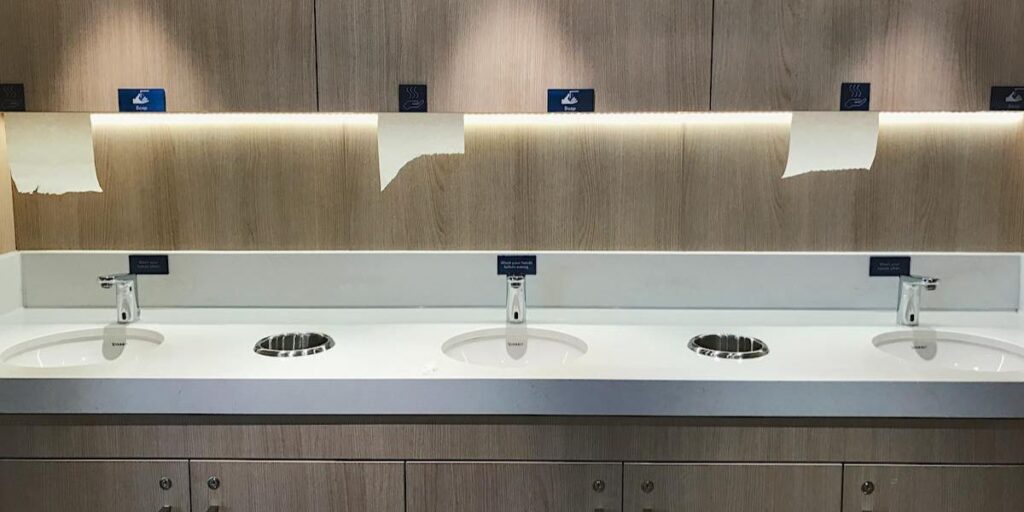
4. Avoid Shaking Hands
Shaking hands with other cruisers is something you should avoid. This is particularly important at mealtimes, as this is when it’s easy to transfer any virus from your hands to your mouth.
Since 2020 (COVID), shaking hands is not as common as it used to be, and declining a handshake is not something that should cause embarrassment.

Stopping The Spread Of The Virus
When norovirus is reported on a cruise ship, the staff will put measures in place to stop the spread of the virus.
Measures to control norovirus outbreaks include:
- Advising passengers that others are experiencing symptoms of gastrointestinal illness and giving information about what everyone can do to prevent it from spreading
- Regularly sanitising every area of the ship with a powerful disinfectant called Virox
- Assigning extra staff to monitor entrances of eating areas to ensure that every passenger washes their hands
- Removing items such as salt and pepper shakers and butter dishes from tables and replacing them with individual sachets
- Stopping the use of self-service drinks machines and instead having staff dispense drinks for guests
- Serving guests at buffets rather than allowing self-service
If these measures are not successful in halting the spread of the disease, in rare cases, it is possible for all passengers to be confined to certain areas of the ship, or to their cabins, or even for the cruise to end early.
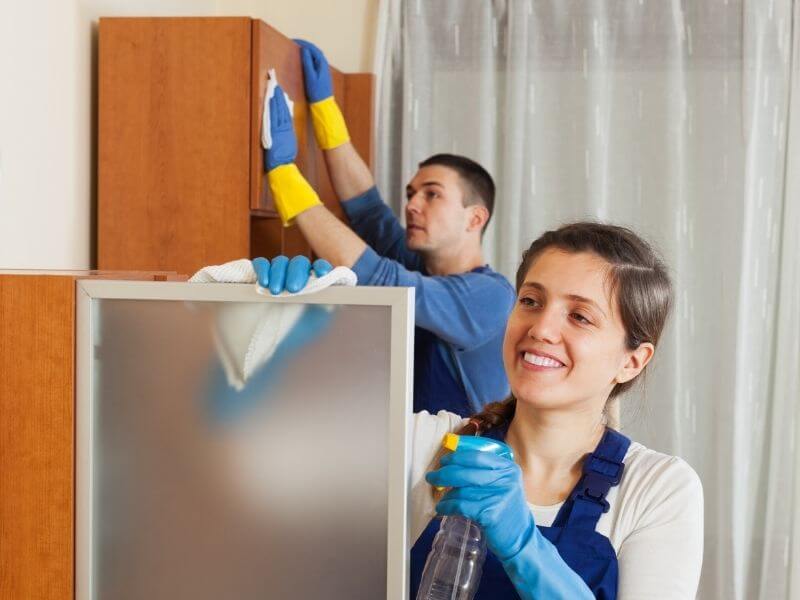
Code Red: What It Really Means
Cruise ship staff use secret codes to avoid causing alarm. If you hear CODE RED, it means that there is a serious outbreak of illness on the ship. For a less severe outbreak, you may hear CODE YELLOW.
The exact number of cases needed for each alert level varies by cruise ship. It may be a certain number of cases or a certain percentage of passengers and crew on the ship.
Read more: Secret Codes On Cruise Ships Explained
What To Do If You Catch Norovirus On A Cruise
1. Report It
As soon as you become unwell, it’s vital that you return to your cabin and call reception to report it.
They will advise you about what to do next and arrange a phone call with one of the ship’s nurses, who can give you medical advice. The medical team will phone regularly to check how you are feeling.
2. Isolate Yourself
You must stay in your cabin until 24 hours after any vomiting or diarrhoea has stopped.
Your cabin will be regularly sanitised by specially-trained crew members. If you require any additional housekeeping, you can call reception, and someone will be with you quickly. You can also have any items of clothing cleaned free of charge if needed.
3. Rest And Recover
Whilst quarantined in your cabin, you can order from room service free of charge. There is a specially planned menu to assist with recovery, which includes bland items such as toast, porridge, soup, sandwiches, grilled chicken breast, salad and chips. Your meals will be served on disposable plates.

As you are not permitted to leave the ship during the isolation period, if you have booked shore excursions with the cruise line, the cost of these will be refunded to you.
If you have booked excursions independently, you may be able to cancel them if you give 24 hours’ notice. If you are unable to do this, you may be able to claim on your travel insurance, depending on the policy details.
Suggested read: Why You Need Cruise Insurance (Not Just Regular Travel Insurance)
TODAY’S BEST CRUISE DEALS!
Don’t miss these offers…
Related posts:
- Do Cruise Ships Put Laxatives In Food?
- Norovirus Outbreak Affects Over 80 Passengers And Crew On Coral Princess Cruise
- Do Cruise Ships Have Morgues?
- 16 Tricks Guaranteed To Prevent Seasickness On A Cruise
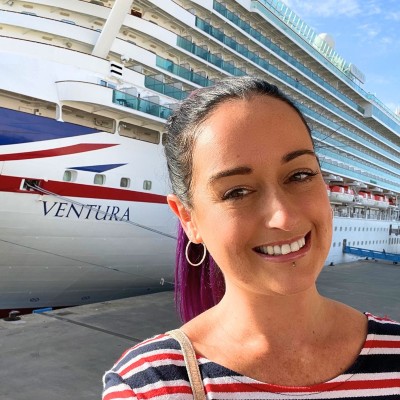
Jenni Fielding is the founder of Cruise Mummy. She has worked in the cruise industry since 2015 and has taken over 30 cruises. Now, she helps over 1 million people per month to plan their perfect cruise holidays.

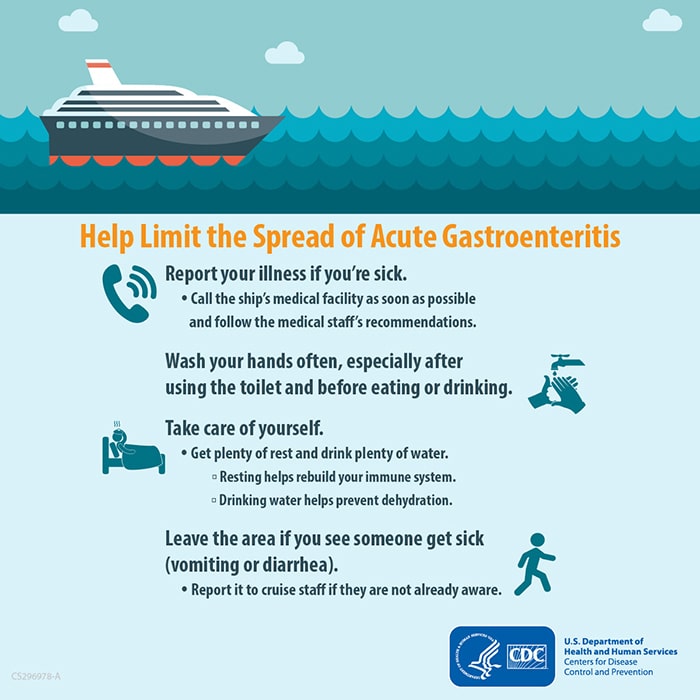
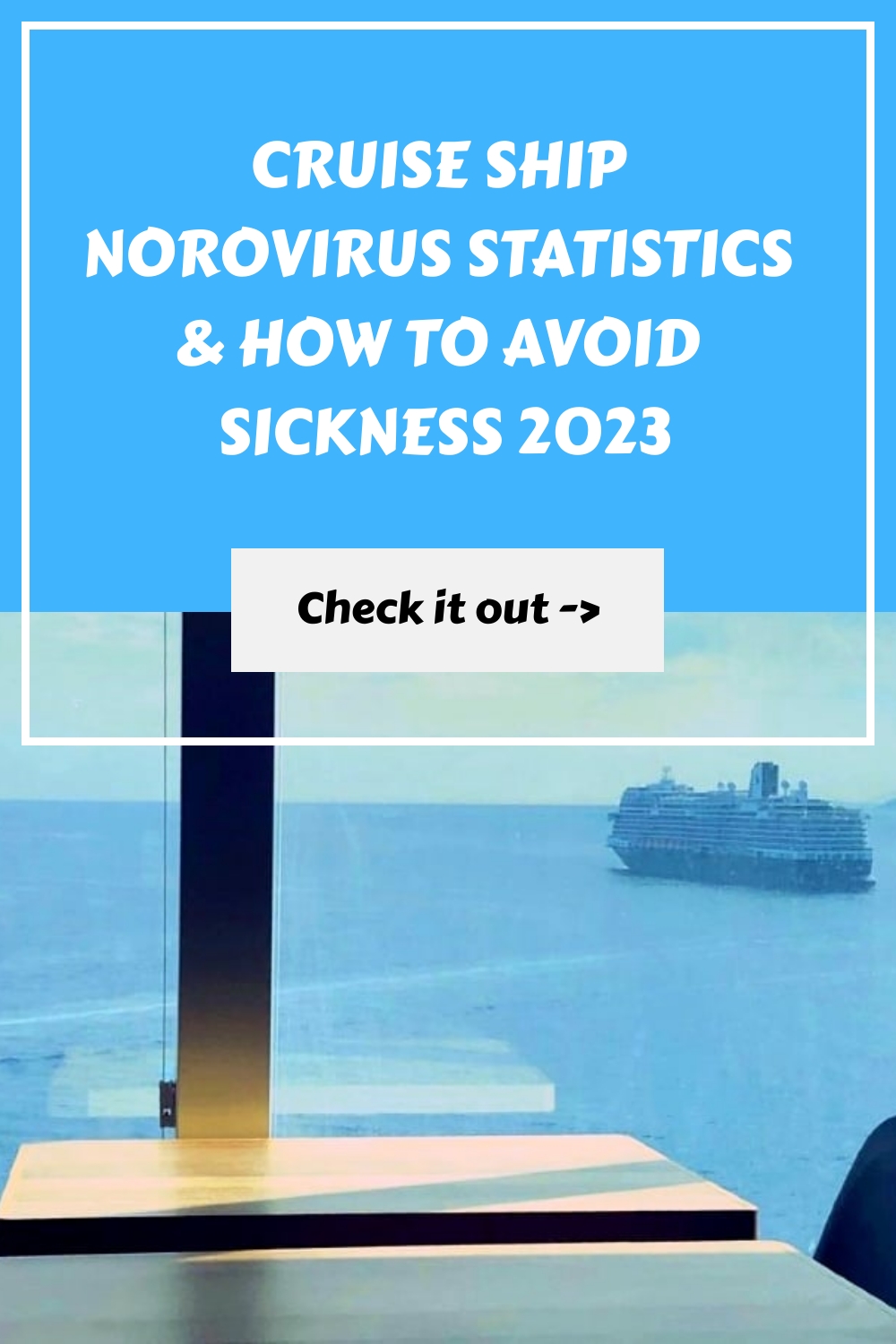

I had norovirus on Arvia last May confined to cabin no medical advice given just to stay in cabin staff phoned to check I was there meals, who wants to eat when ill and menues were not changed to suit anyway I am always washing my hands and use a rollator so do not as a rule touch handrails annoyed previous cruise had the virus staff as well as holidaymakers. At least Fred Olsen pay comp not P +O though